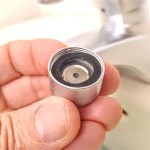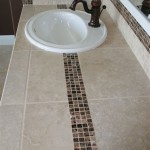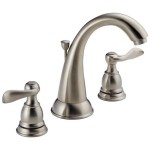Contemporary Bathroom Vanity Vessel Sink: A Fusion of Style and Function
The contemporary bathroom vanity vessel sink has emerged as a prominent design element in modern bathroom aesthetics. Characterized by its distinctive above-counter installation, the vessel sink offers a blend of visual appeal and functional efficiency. This article explores the key aspects of contemporary bathroom vanity vessel sinks, encompassing their design variations, material options, installation considerations, and maintenance practices.
Design Versatility and Aesthetic Impact
A primary advantage of the contemporary bathroom vanity vessel sink lies in its design versatility. Unlike traditional integrated or undermount sinks, vessel sinks present a visible profile, acting as a focal point within the bathroom. The variety in shapes, sizes, and styles ensures compatibility with diverse design preferences. Options range from minimalist circular basins to more sculptural, asymmetrical forms. The elevation of the sink above the countertop contributes to a modern and spacious feel, especially beneficial in smaller bathrooms. Furthermore, the exposed exterior of the vessel sink enhances its aesthetic impact, allowing for the incorporation of decorative elements, textures, and colors that complement the overall bathroom decor.
The aesthetic impact of a contemporary vessel sink is amplified by its ability to be paired with various faucet styles. Tall, freestanding faucets or wall-mounted faucets are commonly chosen to accommodate the height of the vessel sink. These faucet pairings not only serve a functional purpose but also contribute to the overall visual harmony of the bathroom. The exposed plumbing associated with certain faucet configurations can be integrated as part of the design, adding an industrial or minimalist touch. In addition, the design considerations extend to the vanity itself. Vanities designed for vessel sinks typically feature a lower profile to accommodate the height of the sink, creating a balanced and ergonomic arrangement.
Moreover, the adaptability of vessel sinks extends to various bathroom design themes. In minimalist bathrooms, a simple, geometric vessel sink in neutral tones can reinforce the clean lines and uncluttered aesthetic. Conversely, in more opulent or eclectic bathrooms, a richly textured or patterned vessel sink can add a touch of luxury and visual interest. The ability to experiment with different materials and finishes further expands the design possibilities. Glass vessel sinks, for example, can create a sense of airiness and light, while stone or concrete vessel sinks can introduce a more grounded and organic feel.
The selection of a vessel sink should also consider the existing architectural elements of the bathroom. The shape and style of the sink should complement the room's overall design language, whether it is contemporary, traditional, or transitional. Coordinating the sink with other bathroom fixtures, such as the bathtub and toilet, can create a cohesive and harmonious space. Furthermore, the placement of the vessel sink on the vanity should be carefully considered. Positioning the sink off-center or creating asymmetrical arrangements can add visual interest and break the monotony of symmetrical designs.
Material Selection and Durability
The selection of the right material for a contemporary bathroom vanity vessel sink is crucial for both aesthetic appeal and long-term durability. Various materials are available, each offering unique characteristics in terms of appearance, resistance to staining, and ease of maintenance. Popular material options include ceramic, glass, stone, metal, and composite materials.
Ceramic vessel sinks are a common and cost-effective choice. Ceramic is known for its durability, resistance to scratches, and ease of cleaning. It is available in a wide range of colors and finishes, allowing for seamless integration with various bathroom designs. Porcelain, a type of ceramic, offers enhanced durability and stain resistance, making it an excellent option for high-use bathrooms. The non-porous surface of ceramic sinks prevents the absorption of water and bacteria, contributing to improved hygiene.
Glass vessel sinks offer a distinctive aesthetic, characterized by their translucent or opaque appearance. Glass sinks can add a touch of elegance and sophistication to the bathroom. Tempered glass is typically used for vessel sinks to ensure durability and resistance to shattering. Glass sinks are available in a variety of colors and textures, allowing for customization and visual interest. However, glass sinks may require more frequent cleaning to maintain their pristine appearance, as they can be more susceptible to water spots and fingerprints.
Stone vessel sinks, such as granite, marble, or travertine, offer a natural and luxurious aesthetic. Each stone vessel sink is unique due to the natural variations in the material. Stone sinks are highly durable and resistant to heat and scratches. However, some stone materials, such as marble, may be more porous and require sealing to prevent staining. Regular maintenance and sealing are essential to preserve the beauty and integrity of stone vessel sinks.
Metal vessel sinks, such as stainless steel, copper, or brass, offer a contemporary and industrial aesthetic. Stainless steel sinks are known for their durability, corrosion resistance, and ease of cleaning. Copper and brass sinks offer a unique patina that evolves over time, adding character and warmth to the bathroom. Metal sinks are available in a variety of finishes, such as polished, brushed, or hammered, allowing for customization and visual interest. However, metal sinks may be more susceptible to scratches and dents than other materials.
Composite materials, such as acrylic or solid surface, offer a combination of durability, design flexibility, and affordability. Composite vessel sinks are available in a wide range of colors and shapes, allowing for seamless integration with various bathroom designs. These materials are non-porous and resistant to staining, making them easy to clean and maintain. Composite sinks are also less prone to chipping or cracking than some other materials.
When selecting a material for a vessel sink, it's essential to consider the overall design aesthetic of the bathroom, the level of maintenance required, and the budget. Each material offers unique advantages and disadvantages, and the choice should be based on individual preferences and practical considerations.
Installation and Plumbing Considerations
Proper installation of a contemporary bathroom vanity vessel sink is crucial for both functionality and aesthetic appeal. Unlike traditional sinks that are integrated into the countertop, vessel sinks sit above the counter, requiring specific installation techniques and plumbing considerations. The installation process involves securing the sink to the vanity, connecting the drain, and installing the appropriate faucet.
The first step in installing a vessel sink is to prepare the vanity countertop. Most vanities designed for vessel sinks have a pre-drilled hole for the drain. If the vanity does not have a pre-drilled hole, it will need to be carefully drilled to accommodate the drain assembly. The placement of the hole should be determined based on the size and shape of the vessel sink, ensuring that the sink is centered or positioned according to the desired aesthetic.
Once the hole is prepared, the vessel sink can be placed on the vanity. Some vessel sinks may require the use of a mounting ring or silicone sealant to secure them to the countertop and prevent movement. Follow the manufacturer's instructions for the specific vessel sink being installed. Ensure that the sink is properly aligned and level before proceeding with the drain installation.
The drain installation is a critical step in ensuring proper drainage and preventing leaks. Vessel sinks typically require a specialized drain assembly known as a "vessel sink drain." This drain assembly is designed to accommodate the thickness of the vanity countertop and the height of the vessel sink. The drain assembly includes a tailpiece, a drain flange, and a rubber gasket. Apply plumber's putty or silicone sealant to the underside of the drain flange to create a watertight seal. Insert the tailpiece through the drain hole in the vanity countertop and connect it to the drain flange. Tighten the drain assembly securely, but avoid overtightening, which can damage the sink or vanity.
The faucet selection and installation are also important considerations for vessel sinks. Due to the height of the vessel sink, a taller faucet is typically required. Options include vessel sink faucets, which are designed with an extended spout, or wall-mounted faucets, which are installed on the wall behind the sink. Ensure that the faucet spout reaches far enough over the sink to allow for comfortable use. Connect the faucet to the water supply lines according to the manufacturer's instructions. Check for leaks and make any necessary adjustments.
Plumbing considerations for vessel sinks include ensuring adequate water pressure and proper drainage. The drain line should be properly sloped to allow for efficient drainage and prevent clogs. If necessary, a plumber can adjust the plumbing to accommodate the vessel sink installation. It's essential to follow local plumbing codes and regulations when installing a vessel sink.
Professional installation is recommended for individuals who are not experienced in plumbing or DIY projects. A professional plumber can ensure that the vessel sink is installed correctly and safely, preventing potential problems such as leaks or drainage issues. Furthermore, proper installation by a qualified professional can help protect the warranty of the vessel sink and faucet.

36 Espresso Modern Bathroom Vanity Vessel Single Sink With Faucet And Linen Side Cabinet Option

27 Vessel Sink Vanity Unique Functional Design

Adelina 48 Inch Contemporary Vessel Sink Bathroom Vanity Onyx Counter Top

30 Modern Style Vessel Sink Giovanni Bathroom Vanity Model Hf3 Bentoncollections

Contemporary Powder Room Features A Glass Mirror Placed Over Floating Vanity Topped With Small Bathroom Sinks Remodel Bathrooms

36 Tennant Brand Modern Style White Beatrice Vessel Sink Bathroom Van Chans Furniture

Modern Classicism Luxury Bathroom With Eden Stone Vessel Sink

30 Light Oak Modern Bathroom Vanity Vessel Sink With Faucet And Linen Side Cabinet Option
30 Bathroom Vanity Modern Style Vessel Sink Giovanni V Tennant Brand

Fresca Bathroom Vanities Modern Bath House
Related Posts







